Explore Narad Ghat In Kashi To Witness The Serenity And Tranquility In 2026
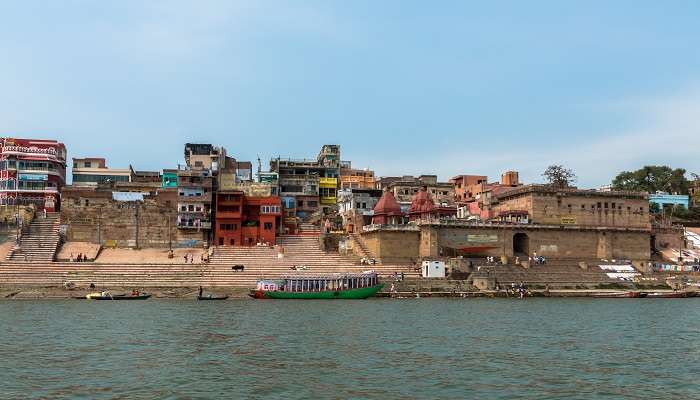
Around 88 ghats can be found in Varanasi, each famous with its unique and interesting story, and Narad Ghat is no different. It has its own uniqueness and history. Narad Ghat is named after the well-known sage of Hindu mythology. He is believed to have emerged from Lord Brahma’s forehead. He remained a sage who practised sagehood and celibacy and linked it as the means to self-cultivation and self-growth. But Narad Ghat is more prevalent among the devotees for its oddity. Legend proclaims that the people who bathe here can eliminate their toxic relationships and marriages.
Ghats of Varanasi
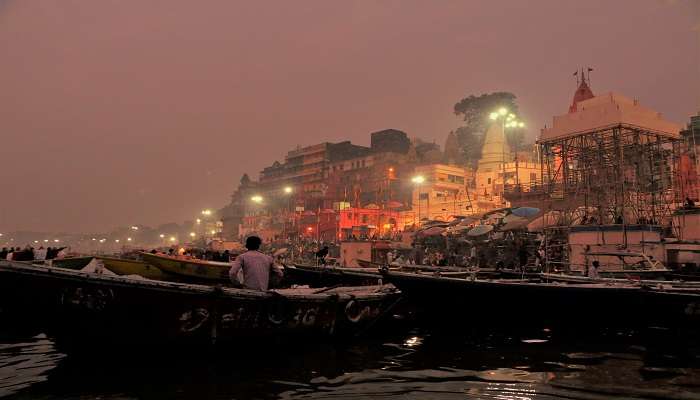
The term Ghat is derived from a Sanskrit word meaning a barrier or a landing place. Ghat, a term used in the Indian subcontinent, depending on the context could either refer to a range of stepped hills such as Eastern Ghats and Western Ghats, or the stairs of steps leading down to a body of water, for ceremonial purposes such as bathing or cremation place along the banks of a river or pond. The Ghats in Varanasi can be duly credited for popularising this term. Ghats in Varanasi are the equally revered and popularly visited riverfront steps leading to the sacred banks of the holy Ganges River. The city is filled with 88 ghats. While most of these ghats are bathing and puja ceremonial ghats, two precisely, Manikarnika and Harishchandra, are used exclusively as cremation sites.
Must Read: Places To Visit In Varanasi
Everything You Need To Know About Narad Ghat In Varanasi
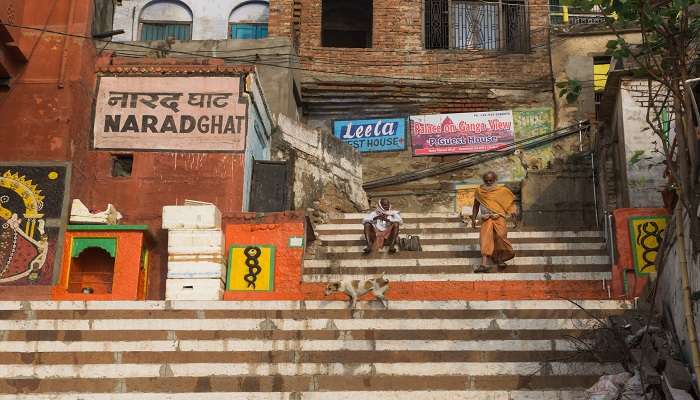
Varanasi, often referred to as Banaras or Kashi as well, is a city on the Ganges River in northern India that has an integral presence in the traditions of pilgrimage, death, and mourning in the beliefs of Hinduism. The city boasts a syncretic tradition of intricate and delicate Islamic artisanship that sometimes even underpins its status as a solidifying centre of religious tourism. Located in the middle Ganges valley in the state of Uttar Pradesh, Varanasi lies on the left bank of the river. Moreover, Varanasi is regarded as one of the world’s oldest continually inhabited cities. This is major because Kashi, its ancient name, has been associated with a kingdom of the same name that existed around 2,500 years ago.
Narad Ghat
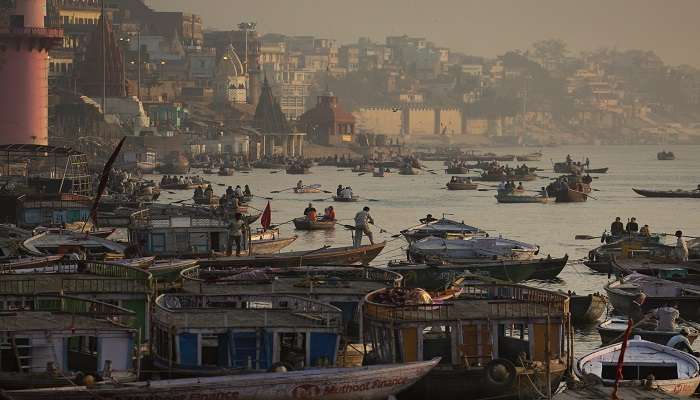
It is believed by the preachers that Narad dedicated his entire life to finding the real meaning of the existence of himself and other human beings. He wanted more outstanding orders in life. The texts and beliefs of Hinduism regard the sage as the messenger of all the worlds (as believed in Hinduism): ‘ Swarg Lok,’ ‘Dharti Lok,’ and ‘Paatal Lok.’ Also, he is depicted as always chanting ‘Narayana,’ another name for Lord Vishnu, which reflects that he was his true devotee. Also, he introduced the musical instrument, ‘Veena.’
Suggested Read: Baraipur
History & Construction
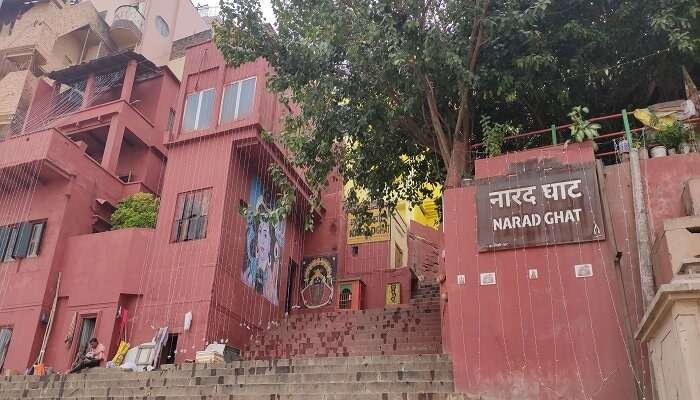
All the ghats in Varanasi were constructed again after 1700 AD, owing to the works of the Maratha Empire. Be it the Scindias or the Bhonsles and even the Peshwas along with the Holkars – all were the patrons who helped rebuild these ghats, associated with religious beliefs and now with religious tourism. Narad ghat was previously known as Kuvai Ghat. Its construction can be credited to a monastery chief in 1788 called Dattatreya Swami. The prominent temple at this ghat has four important idols of the deities: Naradeshwara, Atrishvara, Vasukishvara and Dattatreyeshvar.
Significance
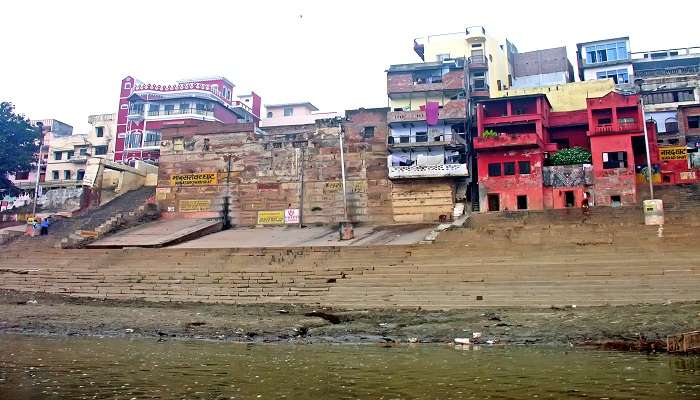
Narada Ghat is widely renowned not only for its profound spiritual significance but also for the historical ties that this site has with the esteemed sage Narada. It is deeply believed that immersing oneself in the sacred waters of the Ganges at Narada Ghat can effectively purify one’s soul, allow the devotee to let go of all the negativity and usher in only positive karma. But is advised for couples to not bathe in the holy river at this ghat. Beyond the spiritual and historical significance, the ghat is also renowned and visited by tourists for its captivating architectural design and tranquil ambience, making it an idyllic destination for spiritual seekers and architecture enthusiasts alike.
Suggested Read: Places To Visit In Uttar Pradesh
How To Reach Narada Ghat
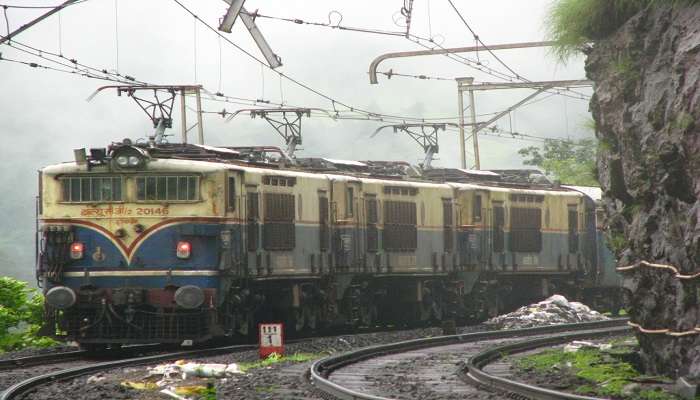
When a city has close to 100 ghats in its area, sometimes it can be challenging to locate a particular ghat. However, the idyllic Narada Ghat can be easily found in the southern region of Varanasi and accessed via roadways without any hassle. The nearest airport, the Lal Bahadur Shastri International Airport at Babatpur, is situated 24 kilometres away from Narada Ghat. Meanwhile, the Varanasi Junction is the closest railway station, 4 kilometres from the Narada Ghat. Hence, this serene location can be conveniently found and travelled to.
Tips While Visiting Narada Ghat
-
- Since the steps of the ghat lead to the river, be very aware of the slippery steps.
- If you wish to take a bath at this ghat, then you should take an extra pair of clothes with you.
- You can hire a guide to learn more about the background, history, construction, etc.
- If you wish to perform any ritual or practice, you should hire a guide and a priest.
- It gets too crowded at specific times of the day, mainly in the afternoon, so pre-plan your schedule for visiting this ghat.
- Do some research, homework, and other things to visit them, and in case of doubt, ask about everything from the guide.
- Don’t visit during monsoons.
- If you are interested in the mythologies of Varanasi, do read as much as you can and do ask the domestic crowd around because they are the best guides in disguise, truly.
Further Read: Chaukhandi Stupa
Now you have complete information about Narada Ghat and the surrounding ghats and that gives you a list of reasons to visit the holy city of Varanasi. Make sure you plan your trip to Varanasi at the earliest and don’t forget to explore all the historical and spiritual marvels of this city. Don’t miss out on exploring these wonders and book your tickets now!
For our editorial codes of conduct and copyright disclaimer, please click here.
Cover Image Credit: Juan Antonio Segal for Wikimedia Commons
Frequently Asked Questions About Narad Ghat
Which ghat hosts the Ganga Arti?
Dasaswamedh Ghat has gained the reputation of being a tourist magnet for hosting a spectacular event known as the Ganga Aarti, which is performed stunningly every evening but still draws a massive crowd every single time and is widely recognized across the region.
What is Manikarnika Ghat famous for?
The Manikarnika Ghat is considered to be the abode of Lord Shiva and hence, serves as the principal ghat for conducting cremation rituals in the city. As the statistics convey, less than 2 in 1000 people who die in India, or 25,000 to 30,000 bodies are cremated on various Varanasi Ghats: about an average of 80 per day.
Where was Ramcharitmanas written?
It is believed that Tulsidas composed the Awadhi language’s greatest composition, the epic poem Ramcharitmanas at Tulsi Ghat in present-day Varanasi.
What is the peculiar fact about Narada Ghat?
Since it is believed that is ghat is owned by sage Narada who was a celibate himself, hence it is advised and even prohibited for couples to bathe together in the river Ganges at this particular ghat.
Which is the nearest ghat to Narada Ghat?
Situated in close proximity to this ghat, Assi Ghat is located at the exact divine point where both the Ganges and the Assi Rivers meet. This ghat is the perfect location for just simply sitting and basking in the serenity and calm of the environment.
People Also Read:
Manikarnika Ghat Dashashwamedh Ghat Bhadaini Ghat

Passionate Marketing Student with a flair for storytelling, eagerly embarking on a journey within the vibrant world of travel. Excited to merge analytical acumen with creative skills to elevate the editorial landscape of the travel industry.











